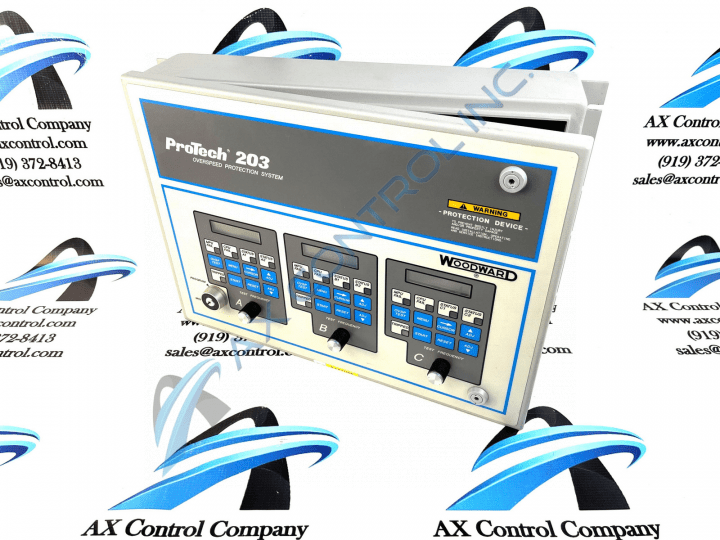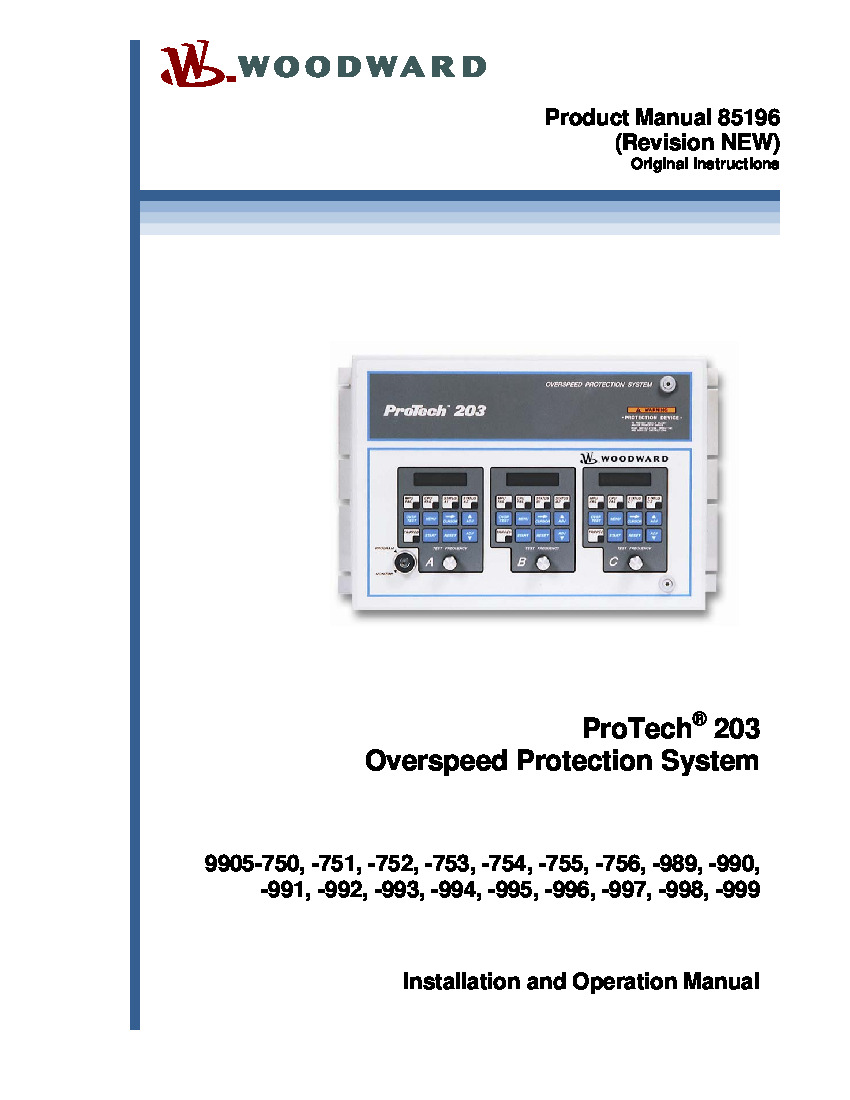About the 9905-995
This Woodward ProTech model activates a trip relay when overspeed conditions are detected by a two-out-of-three hardware vote. If conditions are detected by only one of the three speed-sensing units, that unit will trip but the rest of the system stays online. Model 9905-995 is one of the energized-to-trip models in this ProTech overspeed protection series, so during normal operations, voter relays are in the de-energized state.
The 9905-995 overspeed protection device must be installed in a location that provides adequate ventilation for cooling and where it can maintain an operating temperature range of –25 to +60 °C. This device is sensitive to vibration and electromagnetic interference, and therefore should also be installed somewhere it is protected from high-current or high-voltage devices. A comprehensive look at the location requirements of models 9905-995 is in Woodward ProTech manual 85196.
Three identical speed-sensing units use magnetic pickups (MPUs) to monitor prime mover speed. Each unit has its own 24 Vdc power supply and its own operator interface, complete with an LCD, keypad, LED indicators, and a potentiometer. This interface is where everything from programming to troubleshooting takes place.
During normal operation, the LCD displays information for monitoring each unit. If an error occurs, or if a unit trips, the LCD will display an error code. Events such as a failed MPU or a failed CPU will also trigger an LED indicator light. A tripped unit will activate both an LED and an alarm output.
Error codes, tunable parameters, and general operation information are also in manual 85196.














